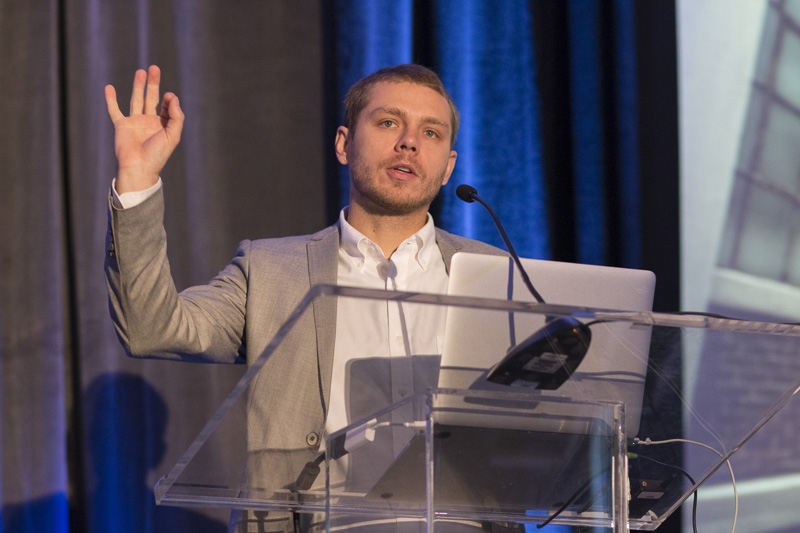November 13, 2015 Updated 11/13/2015
Email Print

Global Plastics Summit 2015 Skylar Tibbits, an MIT professor, says that with 4-D printing, parts would be able to repair themselves
Chicago — In the world of Skylar Tibbits, “a bunch of bricks should be able to put themselves together.”
That was one of many ear-catching statements that the MIT professor made at Global Plastics Summit 2015, Oct. 29-30 in Chicago.
Tibbits is a proponent of what he calls 4-D technology, which takes 3-D printing technology one step further to allow the printing of items that adjust themselves over time in order to accommodate changing physical conditions. 4-D printed items also can repair themselves.
4-D printing is being looked at by many different sectors, including health care, construction and infrastructure. In 2013, Tibbits gave a TED talk on the emergence of 4-D printing.
At GPS 2015, Tibbits said programmable materials in the future will be able to change shape, properties or other functions. He also listed apparel, aviation, sportswear and furniture as markets that could benefit from the technology.
4-D printing already has had some plastic applications in parts made for Airbus and Briggs Automotive Co. The Airbus part is an engine air inlet made of carbon fiber and specialty polymers. The part can change direction based on temperature change and the speed of the plane.
The BAC part also combines carbon fiber with moisture-activated polymers to create aerodynamic panels that can morph based on moisture in the environment. The panels are being used on BAC’s experimental Supercar.
“3-D printing is static stuff,” Tibbits said. “We essentially want to print robots but without wires.
“We’re trying to do things outside of printed plastic,” he added.
Tibbits’ 2013 TED talk on 4-D printing.





























